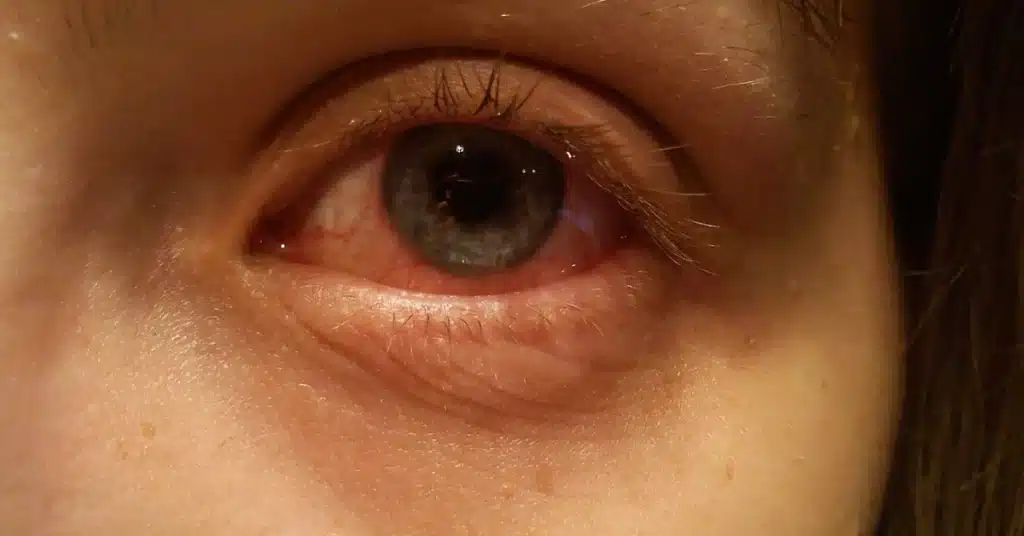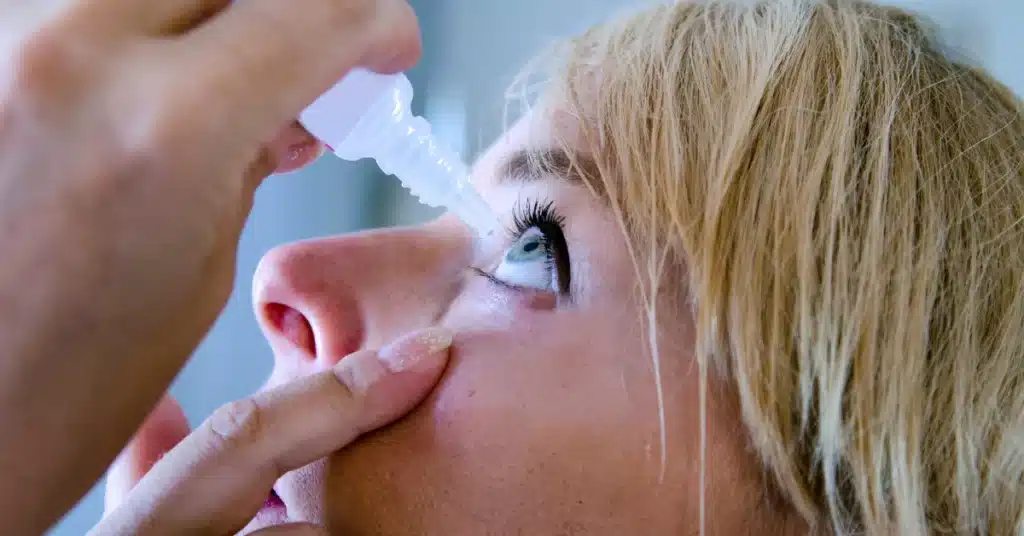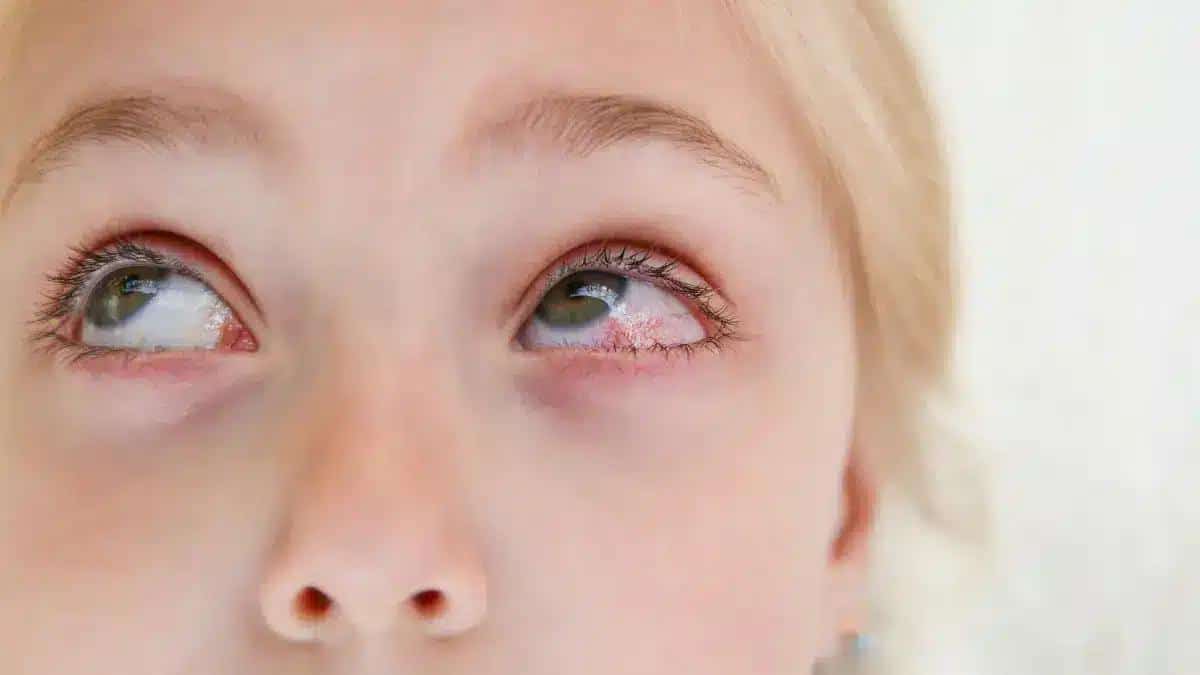Bacterial eye infections are common eye conditions caused by bacterial agents. They are typically caused by eye surgery, injury, contact lens wear, or autoimmune illnesses.
They affect people of all ages and, if left untreated, can cause discomfort and vision problems. Understanding these infections is critical for timely diagnosis and treatment.
This article covers bacterial eye infections, exploring their types, symptoms, causes, and treatment approaches.
What is a bacterial eye infection
Bacterial eye infections develop when bacterial pathogens infiltrate the eye’s surface or the inner eyelid.
These infections can impact various eye parts, such as the conjunctiva (the thin, transparent membrane covering the eye’s white area).
Bacteria like Staphylococcus aureus, Streptococcus pneumoniae, and Haemophilus influenzae can cause these infections.
They can spread from one individual to another by direct contact with the infected person or contact with contaminated surfaces.
Bacterial eye infections can present themselves with various symptoms. The effects of these infections depend on the specific bacteria causing the symptoms and the eye part affected.
However, the common bacterial eye infection symptoms include:
- The white part of the eye appears to be red
- Increased tear production
- A thick yellow or green discharge
- Itching
- Crusting of the lashes or eyelids
- Eye pain and sensitivity to light
- Blurred vision
Types of bacterial eye infection
Bacterial eye infections have several types, such as Conjunctivitis (pink eye), Stye, Keratitis, and Blepharitis. Each type presents with different symptoms that require appropriate treatment.
Let us discuss common bacterial eye infections:
Bacterial Conjunctivitis
 Source: Syda_productions
Source: Syda_productionsBacterial Conjunctivitis (or bacterial pink eye) is a common eye infection involving the inflammation of the conjunctiva.
Redness, irritation, itching, and increased tear production are common symptoms of bacterial pink eye. You may also experience a sticky yellow or green discharge, especially after sleep.
It is extremely contagious and can spread directly with contaminated objects or infected individuals.
Bacteria like Staphylococcus aureus, Streptococcus pneumoniae, and Haemophilus influenzae typically cause this infection.
Recommended read: Learn how to get rid of bacterial pink eye effectively. Check out — A Closer Look at Quick and Effective Bacterial Pink Eye Treatment
Stye
Styes are localized bacterial infections that arise at the eyelash follicle’s base or within an eyelid oil gland.
Symptoms include a red, painful lump on the eyelid, soreness, swelling, and, on rare occasions, pus discharge.
Bacteria, such as Staphylococcus aureus, cause styes. They can go away on their own or require treatment such as warm compresses or antibiotic ointments.
Recommended read: Is it Conjunctivitis or just a Stye? Know the difference — Pink Eye vs Stye: Understanding Causes, Symptoms, and Treatment
Bacterial Keratitis
Bacterial Keratitis is a serious corneal infection commonly caused by bacteria entering the cornea (the clear outer layer of the eye).
Common symptoms of Keratitis include pain, redness, blurry vision, sensitivity to light, excessive tearing, and a sensation of something stuck in the eye.
Timely treatment with antibiotics is crucial to avoid potential vision loss and other complications. Your doctor may prescribe specific Keratitis eye drops or ointments for relief.
Recommended read: Dealing with Keratitis? Discover effective strategies for overcoming the symptoms — Exploring Keratitis Treatment Options
Blepharitis
Blepharitis is a chronic infection involving the inflammation of the eyelids, which develops due to bacterial overgrowth in the eyelid’s oil glands.
It causes symptoms like redness, itching, swollen eyelids, crusty eyelashes, and a gritty eye sensation.
Bacterial overgrowth can contribute to the condition. Treatment usually includes eyelid hygiene, warm compresses, and occasionally antibiotic ointments.
Bacterial eye infection treatment
 Source: Syda_Productions
Source: Syda_ProductionsTreatment for bacterial eye infections often involves using prescribed antibiotic eye drops or ointments.
Antibiotics for bacterial infections, available in the form of eye drops and ointments, specifically target the bacteria causing the condition.
Doctors commonly prescribe antibiotics like Azithromycin, Moxifloxacin, and Doxycycline for eye infections.
The symptoms may gradually disappear after taking antibiotics. However, it is important to complete the full course of treatment to avoid the infection from coming back.
In addition, home remedies can help soothe mild symptoms of these infections.
Using warm compresses and cleansing the eyelids with salt water alongside medical treatment can help relieve discomfort.
However, home remedies for eye infections cannot replace medical treatment. They should be employed alongside prescribed medicines.
Key takeaways
Bacterial eye infections can cause discomfort and affect vision. They occur due to bacterial pathogens entering various parts of the eye.
Conjunctivitis, Keratitis, Stye, and Blepharitis are common bacterial eye infections.
The symptoms include redness, discharge, crusting, teary eyes, and light sensitivity.
Timely diagnosis and appropriate treatment can effectively help manage most cases.
If you suspect a bacterial infection in the eye or experience persistent eye symptoms, it’s essential to consult an eye care professional.
Frequently Asked Questions
How do you treat a bacterial eye infection?
You can treat bacterial eye infections with prescribed antibiotic eye drops or ointments. It is essential to complete the full course of medication as directed for effective treatment.
How do you get a bacterial eye infection?
Bacterial eye infections can occur through contact with infected individuals, contaminated objects, poor hygiene practices, or environmental factors.
How do you know if an eye infection is bacterial?
You can tell if an eye infection is bacterial if you experience redness, discharge (yellow or green), itching, increased tear production, sensitivity to light, and a gritty feeling.
However, consulting a healthcare professional for an accurate diagnosis is important.
How serious is a bacterial eye infection?
The severity of bacterial eye infections can vary. Most cases are treatable and can go away with home remedies or antibiotics.
However, other cases, like Bacterial Keratitis, can be severe and may lead to vision loss or other complications if left untreated.
Can I use over-the-counter eye drops for bacterial infections?
No, over-the-counter eye drops are not advised for bacterial eye infections. It is essential to consult a doctor and take prescribed antibiotic eye drops or ointments for your specific condition.
When referencing outside resources, GoodrxMedicine always provides full citations. To learn more about the measures we use to maintain the quality of our content, please review our Content Information Policy.










